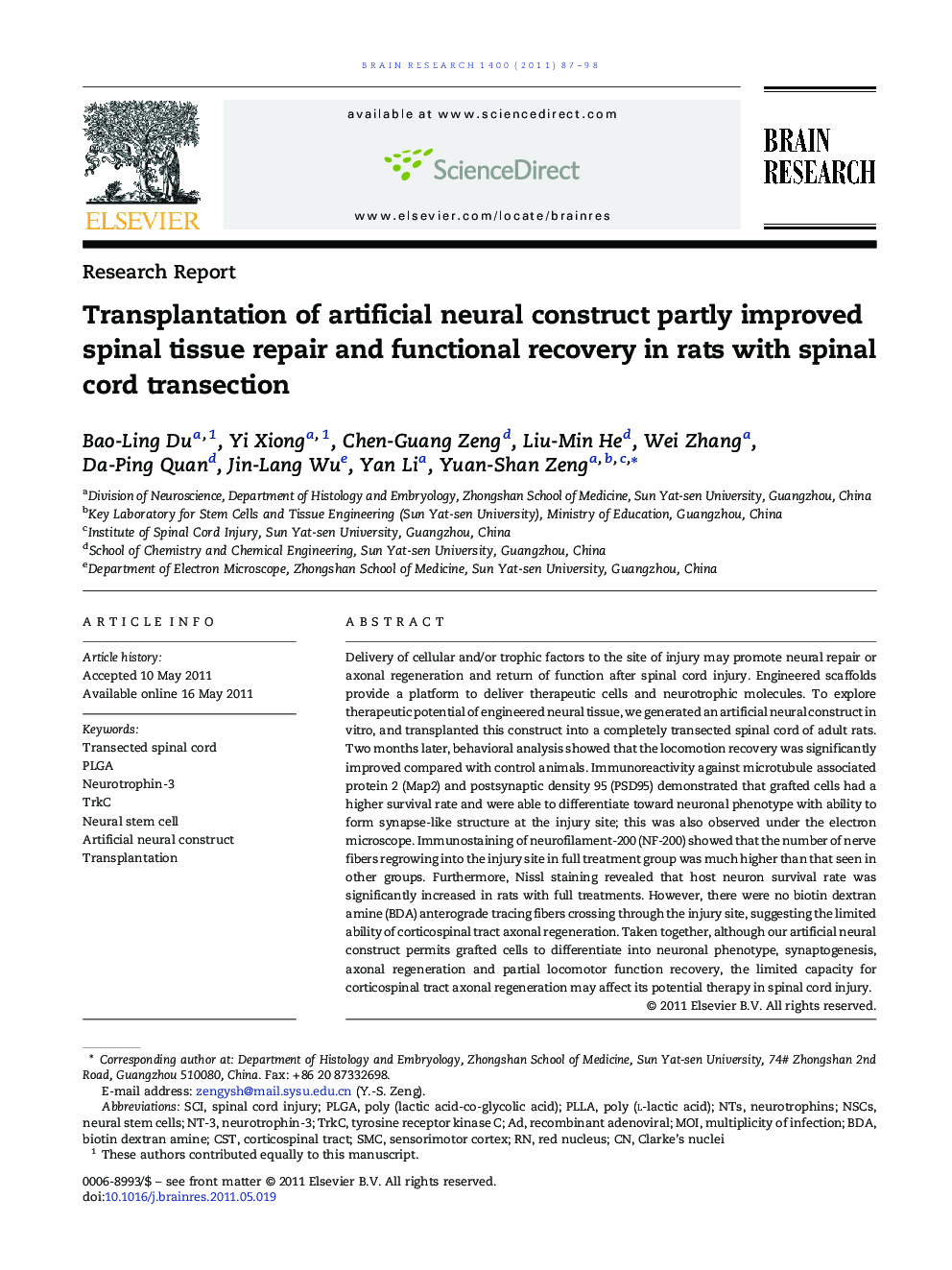| Article ID | Journal | Published Year | Pages | File Type |
|---|---|---|---|---|
| 4325798 | Brain Research | 2011 | 12 Pages |
Delivery of cellular and/or trophic factors to the site of injury may promote neural repair or axonal regeneration and return of function after spinal cord injury. Engineered scaffolds provide a platform to deliver therapeutic cells and neurotrophic molecules. To explore therapeutic potential of engineered neural tissue, we generated an artificial neural construct in vitro, and transplanted this construct into a completely transected spinal cord of adult rats. Two months later, behavioral analysis showed that the locomotion recovery was significantly improved compared with control animals. Immunoreactivity against microtubule associated protein 2 (Map2) and postsynaptic density 95 (PSD95) demonstrated that grafted cells had a higher survival rate and were able to differentiate toward neuronal phenotype with ability to form synapse-like structure at the injury site; this was also observed under the electron microscope. Immunostaining of neurofilament-200 (NF-200) showed that the number of nerve fibers regrowing into the injury site in full treatment group was much higher than that seen in other groups. Furthermore, Nissl staining revealed that host neuron survival rate was significantly increased in rats with full treatments. However, there were no biotin dextran amine (BDA) anterograde tracing fibers crossing through the injury site, suggesting the limited ability of corticospinal tract axonal regeneration. Taken together, although our artificial neural construct permits grafted cells to differentiate into neuronal phenotype, synaptogenesis, axonal regeneration and partial locomotor function recovery, the limited capacity for corticospinal tract axonal regeneration may affect its potential therapy in spinal cord injury.
Research Highlights► Transplantation of the artificial neural construct can promote grafted cells differentiation. ► Transplantation of the artificial neural construct can stimulate axonal outgrowth. ► Transplantation of the artificial neural construct can improve hindlimb locomotor.
